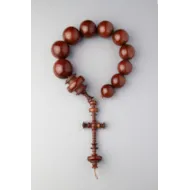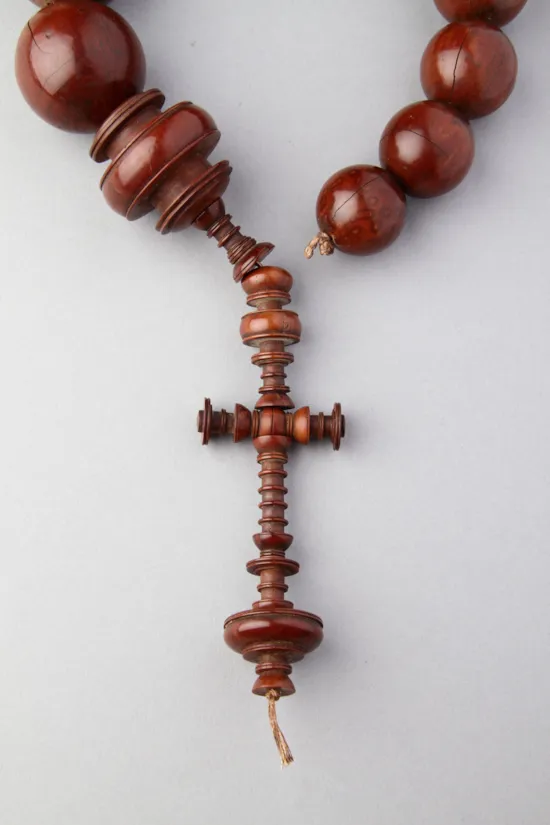German Turned Boxwood Set of Paternoster Rosary Beads
An Unusually Large German Turned Boxwood Set of Paternoster Rosary Beads with Pendant Cross
Late 17th – Early 18th Century
Size: approx: 52cm long – 20½ ins long
See: Finch & Co catalogue no. 3, item no. 19, for a 17th century large Indo-Portuguese Mother of Pearl Rosary
Late 17th – Early 18th Century
Size: approx: 52cm long – 20½ ins long
See: Finch & Co catalogue no. 3, item no. 19, for a 17th century large Indo-Portuguese Mother of Pearl Rosary
Paternoster beads are traditionally reserved for the Lords Prayer. The use of beads for saying prayers began in medieval European monasteries almost a thousand years ago. However, in the mid 16th century Pope Pius V decreed that the rosary had been invented by Saint Dominic (1170-1231). Although there is little historical evidence to support this claim, a series of Popes have approved the tradition and today the Dominicans are officially in charge of making rosaries.
Many beads were considered talismanic, a device to win the beneficence of God, but St Augustine admonished the faithful: ‘God is a circle whose centre is everywhere’ and advised the thoughtful, solitary manipulation of prayer beads to enhance a contemplative state of mind. He believed the repetitious handling of the circular beads helped the worshipper to concentrate on spiritual inward needs.
Many beads were considered talismanic, a device to win the beneficence of God, but St Augustine admonished the faithful: ‘God is a circle whose centre is everywhere’ and advised the thoughtful, solitary manipulation of prayer beads to enhance a contemplative state of mind. He believed the repetitious handling of the circular beads helped the worshipper to concentrate on spiritual inward needs.
German Turned Boxwood Set of Paternoster Rosary Beads

SOLD


YOU MAY ALSO LIKE

